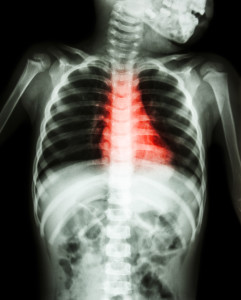Is Your Child at Risk for Rheumatic Heart Disease?
It’s one of the most common circulatory system diseases among children in many parts of the world.
Up until the 1960s, anyone who developed strep throat was at an extremely high risk for rheumatic fever. It’s an affliction that can lead to rheumatic heart disease and other serious complications. But with the development of effective antibiotics to treat strep throat, rheumatic fever is far less common in the U.S. and much of the world. Still, rheumatic heart disease remains among the most widespread acquired circulatory system diseases among children in many countries. It’s especially common in developing nations where poverty is still a problem.
How It Develops
Rheumatic heart disease follows presence of rheumatic fever, which is preceded by a streptococcal infection, commonly known as a strep throat. Children between the ages of 5 and 15 are at the highest risk for infection.
Antiobiotics can help prevent strep from turning into rheumatic fever. And if rheumatic fever does develop, antibiotics can often keep the condition from worsening and causing greater damage to the body. Rheumatic fever usually affects the skin, joints, and the heart.
Complications of the Heart
One of the most serious complications of rheumatic fever is the damage it can do to the heart. When rheumatic fever becomes rheumatic heart disease, the heart’s valves become diseased. Heart valve fibrosis develops, which means the valves become thicker and unable to open and close in a normal and healthy way. The mitral valve, located between the left atrium and left ventricle, is most often the valve harmed by rheumatic heart disease.

A child with rheumatic heart disease experiences fibrous thickening of the heart valves and other complications, highlighted in red.
Of the many types of circulatory system diseases, valve disease is among the most serious. If any of the heart’s four valves stops working effectively, the heart will try harder to compensate. This extra strain on the heart can lead to heart failure and, in many cases, death.
Rheumatic heart disease can also injure the pericardium, which is the thin outer sac that surrounds the heart. The condition can also damage the inner lining, called the endocardium.
Diagnosis and Treatment
Diagnosing rheumatic heart disease usually starts with confirming the presence of strep throat, either recently or even years earlier. Many symptoms of rheumatic heart disease mirror those of rheumatic fever: swollen joints, a rash, fever, and signs of inflammation.
A close listen of the heart is also necessary to detect sounds that might indicate valve disease or other problems. Your doctor will probably request a throat culture or blood test to look for antibodies that would indicate the presence of rheumatic fever or rheumatic heart disease.
A chest X-ray and an echocardiogram may also be ordered to provide images of the heart’s size and structure. These pictures can help determine if there is any inflammation or damage to any part of the heart.
If it’s determined that you have rheumatic heart disease or even rheumatic fever, you’ll likely be placed on a long-term course of antibiotics. If the rheumatic fever was halted before any heart damage was done, it will be important to follow through with the antibiotic therapy to make sure rheumatic heart disease doesn’t develop later.
If valve damage has occurred, but it’s mild, you may not need any treatment beyond regular checkups to monitor the health of your valves. Over time, however, diseased valves can deteriorate to the point where valve repair or replacement is necessary. Fortunately, medical technology is advancing rapidly in this area. Many valve procedures are done with catheters and don’t require open surgery.
Could You Be at Risk?
If you had rheumatic fever as a child, you may still be at risk of rheumatic heart disease. Like other circulatory system diseases, such as atherosclerosis, rheumatic heart disease can take years before it presents with symptoms.
You should let your doctor know that you had rheumatic fever as a child, as it may trigger a closer look at the health of your heart valves and the inner and outer linings of your heart.
Rheumatic heart disease isn’t the widespread risk it was several decades ago, but it does remain a concern. If you or your child shows signs of strep throat, such as a sore throat and an inflamed throat with spots, seek treatment immediately. Effectively treating strep throat can keep rheumatic fever and rheumatic heart disease at bay.
Originally published in March 2016 and updated.


 WHITE COAT SYNDROME
WHITE COAT SYNDROME  News Briefs February 2024
News Briefs February 2024  Savor the Sweet Potato
Savor the Sweet Potato 
Rheumatic heart disease is the result of rheumatic fever which is brought on by strep throat.
© Jarun011 | Dreamstime.com